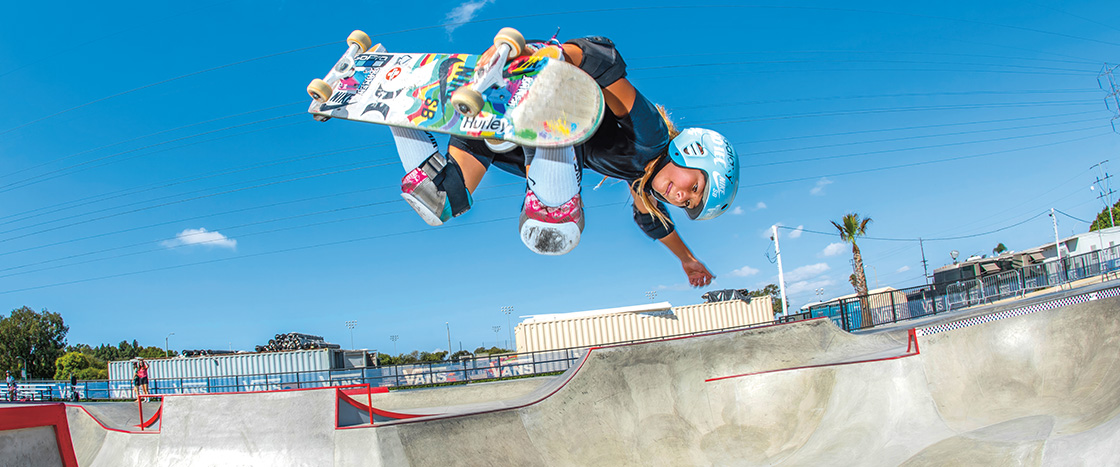It’s a sunny day at the skate park. Kids clad in helmets and knee pads roll up and down ramps, slide across rails, and jump over ledges. One skater zooms up a ramp and launches into the air. Her feet move in a flash as the board spins. At just the right moment, she reaches down to grab the board and presses it to her feet. As she lands, a proud grin spreads across her face.
It can take a skater hundreds of tries—and falls—to master a trick like this one. Gravity constantly pulls skateboarders down to Earth. If they can’t stay balanced, they fall to the ground.
Skateboarders weren’t always able to land such high-flying tricks. Over more than 60 years, skateboarders have pushed the limits of how they can move on a board. During that time, engineers have designed boards that help skaters ride faster, go farther, and jump higher in the sky.
It’s a sunny day at the skate park. Kids wear helmets and knee pads. They roll up and down ramps. They slide across rails and jump over ledges. One skater zooms up a ramp and launches into the air. Her feet move in a flash as the board spins. At just the right moment, she reaches down to grab the board. She presses it to her feet. As she lands, a proud grin spreads across her face.
It can take a skater hundreds of tries—and falls—to master a trick like this one. Gravity constantly pulls skateboarders down to Earth. If they can’t stay balanced, they fall to the ground.
Skateboarders weren’t always able to land such high-flying tricks. Over more than 60 years, skateboarders have pushed the limits of how they can move on a board. During that time, engineers have designed better boards. These boards help skaters ride faster, go farther, and jump higher in the sky.

